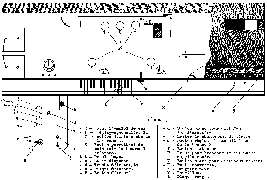What's Ondes Martenot? Takashi HARADA

Takashi HARADA
He directed his attention to the sound from an oscillation circuit with triode tubes, and thought the possibility to make use of this sound to the music.
He had a profound knowledge and affection for music as he had taken an active part in playing the violoncello and conducting in the orchestra organized on the Rhine under occupation by French troops. After the war, he had continued probe and investigation over ten years, and invented a new musical instrument named "Ondes Musicales" (musical waves). It was made public in the first presentation concert on May 1928 at the Paris Opera, and the concert was a sensational success.
This musical instrument, afterwards would be called "Ondes Martenot" or simply "Ondes" (that means "waves" in French), uses a heterodyne circuit as its sound generator.
Its principle is to set up the tune and the volume by reading the difference between the frequencies from two oscillators, and some other musical wave instruments based on this principle were worked out in those days of Europe.
In the trial stage, Ondes Martenot was only one of these simple machines.
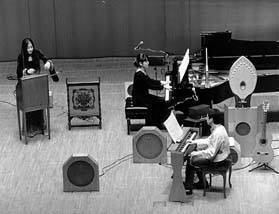
Theremin :Yuki YANO
Piano:Hiroko SAKURAZAWA
(Photo:Phillia Hall)
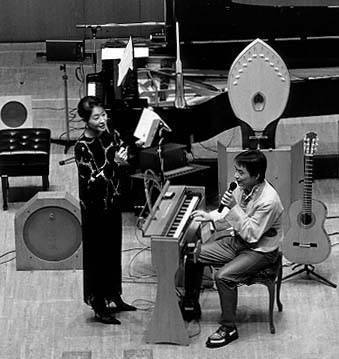
Mrs Mitsuko YORICHIKA(Photo:Phillia Hall)
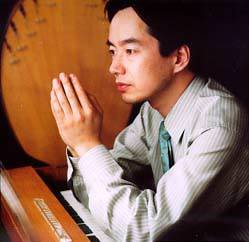
Takashi HARADA
It is also the important fruit for completion as a musical instrument that he realized a very acoustic idea on the speaker, which corresponded to a body of the acoustic musical instrument. He made not only normal types but also speakers which vibrate strings or a gong.
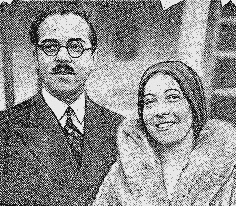
Maurice Martenot and sister Ginette
in Japan 1931
In the season 1930-31, Maurice Martenot and his sister Ginette, one of the first ondes-player, visited the United States at the invitation of Leopold Stokowski. They enthusiastically welcomed at every concert in the States, including the one at Carnegie Hall. After that, by way of Hawaii, they came to Japan on February, 1931.
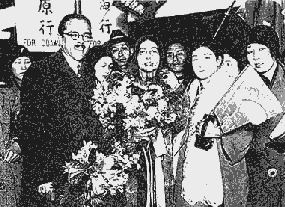
Maurice Martenot and Ginette(center)
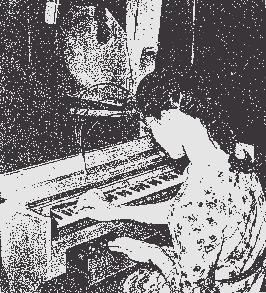
Mrs. Reiko HONSYO,first Ondist of Japan
Maurice Martenot had always continued developping his invention. For example, to carry easier, to play easier, and to expand its range of expression (an original keyboard that could play vibrato by vibrating player's finger added afterwards). But its only functional drastic change is the transistorized version presented in 1975. He had positively followed his personal policy that Ondes Martenot had to be an musical instrument that was played by human beings.
Today, taking over Messiaen's will, a plan making Ondes in Japan has started. Now we are in progress with analysing the genius of Maurice Martenot. There are technique and labor of the high-level artisan that even a newest digital technology can not overtake. No one can make even a replica by only analysing its electronic circuit simply.
I heard Maurice Martenot said that musical instrument itself is a work of art. A profound affection and appreciation for music had created this one and only art. Art is to find your own words.
(translated by Yasuhiko Goteau)
